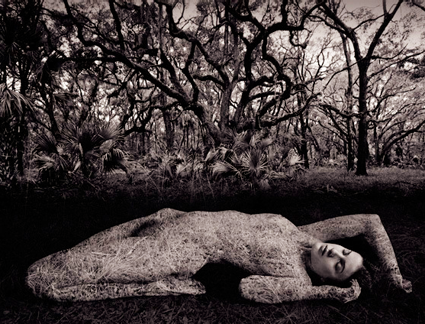The Caponigros – Two Generations Of Photographers
.
In this video my father and I share insights into our creative lives and our passion for printing.
.
In this video my father and I share insights into our creative lives and our passion for printing.
These two videos offer an excellent view into Ansel Adams’ working methods.
View more on Ansel Adams here.
View The Essential Collection Of Documentaries on Photographers here.
Ansel Adams’ Clearing Winter Storm, 1944 is a particularly interesting photograph to me because of its complexity. It’s a specific kind of complexity. Like many other complex images, it’s made of a lot of separate elements but is still unified. Unlike many other complex images, it can be broken into many separate images, each complete compositions in themselves; four peaks in clouds, one vertical monolith in clouds, shadowed valley between monolith and peak, waterfall and peak, waterfall and two trees, etc. (Try finding as many separate compositions in this single image like this as you can.)
When you look at prints of Ansel Adams’ Clearing Winter Storm many assumptions about the medium, the man, and his work are confirmed and challenged. It’s neutral, perhaps even slightly cold in tone, which is appropriate for the subject. The tonal scale is high contrast and full scale, perhaps heavier than expected with very full highlights and it may be surprising that some shadow detail is not preserved. The large format original renders detail well, though there are traces of visible grain in light smooth areas. There’s detail throughout the image (deep depth of field, sharp focus, full scale printing); when it was printed this may have been the sharpest image quality possible while today it looks classically smooth in comparison to new high resolution digitally sharpened images. At 16×20” it’s a medium scale enlargement, not a contact, and could have been printed larger; that it wasn’t is an interesting reflection on both the man and his times. Print quality becomes not only a window into the past of the subject but also into the medium, which this man above all others epitomized for his time.
(There’s a lot to be learned from looking at originals, which is why we look at masterworks from my collection in all of my digital printing workshops.)
Find my comments on other Masterworks In My Collection here.
Learn more in my digital printing workshops.
John Sexton and I speak at length about the uniqueness of the black-and-white palette and the importance of materials.
Read our extended conversation here.
Read his quick Q&A here.
Read his favorite quotes here.
Find out more about John Sexton here.

Jerry Uelsmann’s 1983 nude is a very influential photograph for me. It makes direct what is typically only implied in some ‘straight’ photographs – that mankind is not separate from nature. The transparent merger of figure and ground is poetically rich in so many ways and on so many levels.
No matter how subtle, traces of color change both visual and psychological dynamics in an image. Choice of paper (the color of the white) and toning (the color of highlights, midtones and shadows) can offer both technical and expressive opportunities. The warm toning of the print in my collection seems particularly appropriate. It’s not a heavy toning, but the print is definitely not neutral. The red of the warm tone seems appropriate for flesh. It gives the image a more approachable feeling, perhaps even a touch of romanticism. It makes the subject seem nearer to the viewer; a cooler color would seem more distant. It changes the impression of ambient temperature and time of day; a cooler color would seem closer to winter and twilight or dawn.
The image is also clarifies the differences between analog and digital processes. The substantial burning/darkening at the top of the print hold the eye in the image longer and minimizes what could be distracting area of contrast if it were brighter, but the way the burning reduces midtone and shadow detail in the region calls attention to technique, where it could be minimized or eliminated in a digital process. I wonder if this image were remastered digitally if the artist would decide to reveal traces of grass in the face, perhaps not as much as is revealed in the body or if an attempt would be made to maintain the volumetric aspects of the body where it is? Neither of these technical considerations diminish the work. We know the artist is working within the limits of a particular medium – masterfully. Still, asking these questions and making comparisons and contrasts with other possibilities offer us more insight into the artist’s vision at large and what he his trying to communicate more specifically in this visual statement. This is only one of so many other reasons why media matters.
(There’s a lot to be learned from looking at originals, which is why we look at masterworks from my collection in all of my digital printing workshops.)
Find my comments on other Masterworks In My Collection here.
Learn more in my digital printing workshops.